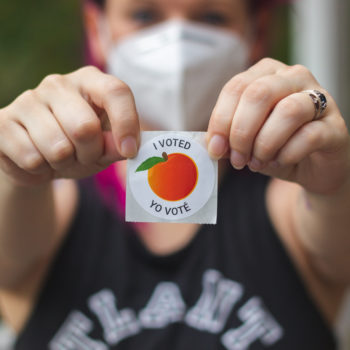NYC Experiments with democracy in 1936
Electoral reform through a historical lens
Looking back at the past can bring a new understanding for the future of democracy . Understanding the differences between the original system and the one just adopted will be critical to understanding how this reform can truly lift up the voices of communities of color. And since NYC recently adopted instant-runoff elections, it’s appropriate to look to the past for lessons we can apply to today.
A world and politics in turmoil
The city first adopted RCV in 1936, when the United States was recovering from the throes of the Great Depression and citizens worldwide were facing the rise of totalitarianism. Times were uncertain and reformers looked for representation as a way to ensure the interests of local citizens were met. Their biggest barrier was the winner-take-all district system then in use.
Before 1936, and for some time beginning in 1949, the city’s use of a winner-take-all system enabled the Tammany Hall Democrats’ domination of elections. Tammany Hall was the dominant political machine of its day. It controlled New York’s political system, in the city and the state, often winning 95 percent of the City Council seats with only two-thirds of the vote.
New Yorkers had enough, and following the lead of ten other US cities before them, decided to use a version of RCV known as PR-STV, for proportional representation with the single transferable vote, to change the rules and the outcome of political games.
How STV works
Each borough elected a number of city councilors based on the number of votes cast. Each political party won seats in that borough based on their candidates’ vote share.
Voters ranked candidates in order of preference on their ballot. Each candidate who reached the “election threshold,” or minimum number of votes to win a seat, were elected. In a borough electing five seats, for example, the threshold is 16.7 percent.
Under single transferable vote, no votes are wasted. Whether an elected candidate has more than enough to win one seat, or the last place candidate has not enough, votes are transferred in a series of rounds to the next highest choice listed on the ballot, until all seats are filled.
Before, the council had been described as a collection of self-serving, career politicians more interested in themselves and their friends than in the lives of New Yorkers. The individuals elected under PR-STV, on the other hand, advocated for enhanced social welfare policies.
Representation effects
The system’s adoption helped increase representation for the city’s minorities and women. In 1941, Adam Clayton Powell Jr. was elected as the city’s first African-American council-member (Later he became the city’s first African-American representative in Congress.)
Similarly, Cincinnati, Hamilton and Toledo also elected their first African-American city council members under the same system. And this was at a time when Jim Crow’s ugly face still ruled much of the country, two decades before the civil rights movement flourished.
PR-STV also allowed Genevieve Beavers Earle to become the first woman elected to the New York City Council.
The reform also resulted in the election of candidates from the American Labor Party and the Communist Party. While they didn’t elect enough members to control the council, they were able to be part of the decision-making process, which is exactly what their supporters sought when they voted for them.
Despite increasing representation, New York repealed PR-STV in 1947. Over the next decade, many other cities did as well. Why? Because it worked too well.
STV’s repeal
Racism and xenophobia were major forces that led to the repeals. The system increased the number of political and racial minorities in political office, disrupting the status quo and causing significant backlash.
Most such repeals, including by New York City, happened in the midst of the “red scare” and the growing civil rights movement. Opponents parroted racist talking points about the dangers of increasing African-American and immigrant representation on legislative bodies, and in classic cold war terms, described the system as un-American.
Additionally, the Republican and Democratic parties joined forces in New York in opposition, even though the Republicans had more seats under PR than they had before it. The GOP did so in part because the American Labor Party garnered five spots on the City Council, which was two more seats than the Republican Party.
While the Democratic machine still held onto a significant portion of the seats, their overall political influence waned in the PR Councils because of an increase in other parties and independent Democrats.
Diversity in representation
Author Peter Emerson wrote the quality of American democracy must be measured by diversity in representation, as well as by diversity in voting rights. Winner-take-all elections, at all levels of government, erodes the quality of both.
The status quo is especially bad for communities of color. Segregation of the population is alive and well in the parts of urban America with “majority minority” districts. For people of color to be adequately represented in winner-take-all elections, in other words, they have to live in segregated neighborhoods.
Additionally, this also means that in jurisdictions without such severe racial segregation, there’s often no path to representation for communities of color. Given the bias towards majority-minority district remedies in most Voting Rights Act enforcement, that’s a big problem; fortunately, proportional options are being used more and more.
Conclusion
Between the height of the Depression and the end of World War II, New Yorkers reshaped democracy in the nation’s largest city in a time of massive political, social and economic turmoil. They embraced the future of American democracy by enhancing representation of a diverse city in body and mind. Enhancing representation was mostly a novel idea at that time, but its spirit continues, now needed more than ever.



